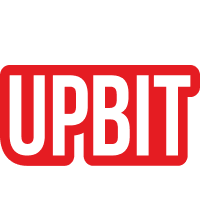Interviewer: Thank you for joining us today. To start, could you briefly explain what Upbit Systems is and what makes it unique?
Upbit Systems is a software innovation company — though I prefer to call it a solutions architecture lab. Our mission is not to just write code but to translate complex business challenges into elegant, self-optimizing digital systems. We believe software should be a strategic asset — not a byproduct of specifications.
What sets us apart is the mindset: we challenge the client’s initial assumptions. When a company comes to us with an idea, our first instinct isn’t to build exactly what they ask for, but to understand why they ask for it. Often, we help them reimagine their problem — and the eventual solution is far more powerful than they initially imagined.
Interviewer: That sounds ambitious. What specific problems does Upbit solve for businesses?
Most modern enterprises are paralyzed by fragmentation. Critical knowledge lives across dozens of tools — CRMs, ERPs, emails, chat threads, data silos. This chaos breeds inefficiency, slows decisions, and creates cognitive fatigue among teams.
Upbit addresses this by unifying knowledge management, workflow automation, and data intelligence into a single operating ecosystem. Our technology layer connects to existing business tools and overlays an intelligent reasoning engine that continuously learns from operational patterns. It’s not just automation — it’s self-optimization.
The outcome is a living organization: one where routine work is systematically reduced, and human focus is redirected toward creativity, insight, and strategy.
Interviewer: Can you walk us through Upbit’s core business processes?
Our internal process is a disciplined blend of Agile execution and engineering philosophy. We don’t worship rituals; we focus on results. Every task must directly contribute to measurable progress — or it doesn’t exist.
When we begin a project, we move from concept to a tangible prototype almost immediately. Even a hand-drawn sketch can transform abstract discussions into clarity. This early visualization allows clients to experience their future system — to question it, reshape it, and align around what truly matters.
We start development with the system’s core purpose. If the software is meant to generate financial analytics, that’s what we deliver in Sprint One. No login screens, no superficial scaffolding — just the core outcome. That’s how we build momentum, trust, and feedback cycles that genuinely accelerate learning.
Every developer at Upbit owns a functional domain end-to-end. We don’t divide talent into narrow roles. A developer takes full responsibility — from requirements to deployment — ensuring continuity, accountability, and drastically fewer defects.
Transparency is another cornerstone. Our clients receive structured daily progress updates — a brief, clear report of what was planned, accomplished, and scheduled next. It’s a simple discipline that builds trust and enables real-time priority adjustments.
And finally, every two weeks, we deliver working software. Not slides, not promises — tangible value that grows iteratively and predictably.
Interviewer: What role does AI play inside Upbit?
That’s a critical question — and one that deserves honesty. AI is both a tremendous opportunity and a profound responsibility.
We use AI extensively — for prototyping, documentation, test generation, and even refactoring — but we draw a clear ethical line. No AI-generated code enters production without human validation. Period.
At Upbit, a developer must review, understand, and take ownership of any AI-assisted output before it merges into the codebase. We treat AI as a colleague — not an author. It augments human capacity, but it doesn’t replace human judgment.
We see AI not as a coder but as a thinking amplifier. Its purpose is to help us explore possibilities, not abdicate responsibility.
Interviewer: What payment model does Upbit Systems use when working with clients?
We align our business model with our Agile philosophy — adaptive, transparent, and focused on outcomes rather than paperwork.
We don’t lock ourselves or our clients into rigid fixed-price contracts that suffocate innovation. Instead, we use a time and material model, where both sides remain flexible and engaged. Every hour is visible, every milestone measurable, and every adjustment negotiable in real time.
This allows us to iterate fast, pivot when needed, and maintain trust throughout the process. In essence, our clients aren’t just funding development — they’re co-investing in progress.
Interviewer: What’s next for Upbit?
We’re entering what I call the age of synthesis. For decades, the software industry has been about decomposition — breaking problems into smaller tasks, assigning them to people, and managing complexity through process. But now, the challenge is the opposite: reintegrating intelligence across these fragments.
The next phase for Upbit is building systems that design themselves under human supervision. I’m particularly excited about AI-driven prototyping — imagine a client sitting with us during the first meeting and interacting with a semi-functional version of their system minutes later.
Our mid-term goal is to cut development cycles from months to days, moving from sequential development to co-creation in real time.
We’re also investing in autonomous testing frameworks — systems that can reason about code quality and functionality, learning from each iteration. The ultimate vision is a continuously evolving platform where human creativity and machine precision converge seamlessly.
Interviewer: A final question — how would you describe Upbit in one sentence?
Upbit is a Dream Factory for the digital age — a place where human imagination meets disciplined engineering to turn bold ideas into living systems.

